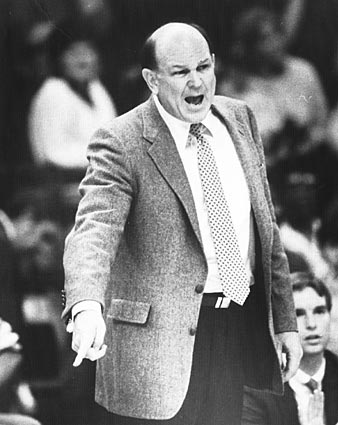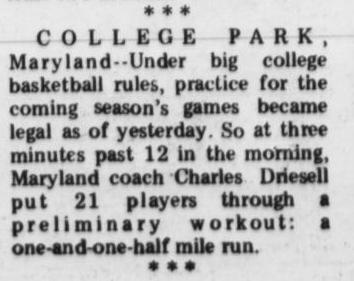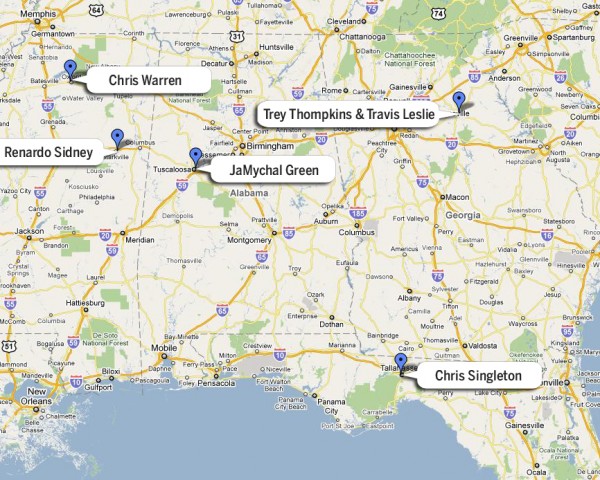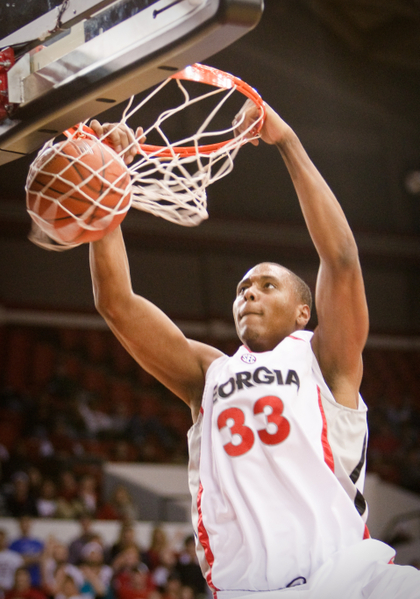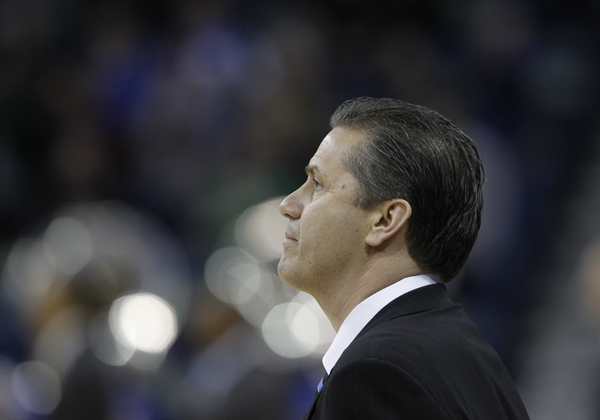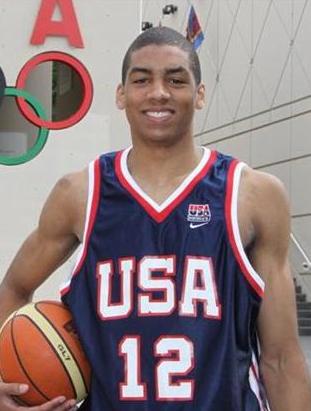Posted by zhayes9 on October 28th, 2010

Zach Hayes is an editor, contributor and bracketologist for Rush the Court.
With college basketball approaching in a matter of days, fans across the nation can look forward to one of the major draws of the sport: pre-conference tournaments. Aside from catering to hungry fans that want to see highly ranked teams do battle even in the earliest stages of the season, these tournaments are golden opportunities for coaches to judge and evaluate where their teams stands against elite competition. It presents our first chance to surmise that, say, Kentucky’s fabulous freshmen may not quite stack up to last year’s history-making class, that Duke may miss Brian Zoubek and Jon Scheyer more than originally expected or that Jacob Pullen can adequately handle point guard duties for Kansas State. The teams we label in early November as the prime contenders to cut down the nets five months later in Houston are revealed for the first time in tournament settings that allow programs to build early season momentum, confidence and quality wins that stand out come Selection Sunday. No other sport provides such drama in tournament settings at such an early point in the season.
As usual, a handful of headlining programs have elected to participate in these tournaments. Duke will encounter their first true tests in the CBE Classic, Pitt eyes a difficult field in the 2K Sports Classic and North Carolina heads out to Puerto Rico in a wide open field. All of these fields could provide intense drama and classic clashes normally reserved for the first days of spring. Here’s a preview of the best tournaments college basketball has to offer in pre-conference play and the main storylines heading into each event. Mark your calendars now.
2K Sports Classic (Opening Rounds: November 8-10, Semifinals: November 19, Finals: November 20)
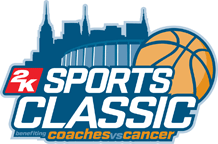
 The Field: Ever since the Gardner-Webb shocker upended plans for Kentucky and their rabid fans to travel to Madison Square Garden, this has been an event where the four regional hosts automatically advance to NYC. This year’s participants are Pittsburgh, Illinois, Texas and Maryland. The prohibitive favorite has to be preseason Big East topper Pittsburgh and their four starters returning from an overachieving squad that garnered a #3 seed in the NCAA Tournament. Ashton Gibbs is a game-changing scoring guard and the athletic Gilbert Brown is an x-factor on the wing for Jamie Dixon. Illinois has expectations of reaching the second weekend in March for the first time since the national championship defeat in 2005, while Texas hopes that addition by subtraction helps avenge last season’s collapse from #1 team in the nation to first round victim. Maryland will likely still be figuring out a rotation at this stage after their three leading scorers were all lost to graduation. One player that may vault into stardom is Terps big man Jordan Williams, who nearly averaged a double-double as a freshman in the ACC.
The Field: Ever since the Gardner-Webb shocker upended plans for Kentucky and their rabid fans to travel to Madison Square Garden, this has been an event where the four regional hosts automatically advance to NYC. This year’s participants are Pittsburgh, Illinois, Texas and Maryland. The prohibitive favorite has to be preseason Big East topper Pittsburgh and their four starters returning from an overachieving squad that garnered a #3 seed in the NCAA Tournament. Ashton Gibbs is a game-changing scoring guard and the athletic Gilbert Brown is an x-factor on the wing for Jamie Dixon. Illinois has expectations of reaching the second weekend in March for the first time since the national championship defeat in 2005, while Texas hopes that addition by subtraction helps avenge last season’s collapse from #1 team in the nation to first round victim. Maryland will likely still be figuring out a rotation at this stage after their three leading scorers were all lost to graduation. One player that may vault into stardom is Terps big man Jordan Williams, who nearly averaged a double-double as a freshman in the ACC.
The Sleeper: It’s difficult to fathom that losing Damion James and Dexter Pittman can possibly make a team better, but one has to prescribe to the notion that more defined roles and a clear-cut rotation should translate into improved chemistry for Texas following last season’s bitter disappointment. Rick Barnes still has tremendous talent up and down his roster including the infusion of two McDonalds All-American recruits in point guard Cory Joseph and power forward Tristan Thompson. If he utilizes more discretion on when to pull the trigger, it wouldn’t shock us if Jordan Hamilton had a breakout campaign. This also provides an early chance for Florida transfer Jai Lucas to shine on a big stage. Remember, Lucas is just two seasons removed from averaging 8.5 PPG and shooting 44% from deep as a freshman.
The Pick: While Texas has a strong chance of advancing, we’re even more bullish on Illinois in the preseason. Mike Davis and Mike Tisdale bring height and scoring inside, Demetri McCamey is an assist machine at the point and freshman Jereme Richmond is the perfect answer on the wing for Bruce Weber. If they were to face Pitt in the final, McCamey out-muscles Ashton Gibbs on the perimeter, Richmond’s length contains Gilbert Brown on the wing and Tisdale’s versatility pushes Pitt big man Gary McGhee from his comfort zone in the paint. With the victory, the buzz around Illinois’ chances in the ultra-competitive Big Ten will only escalate.
CBE Classic (Opening Rounds: November 12-18, Semifinals: November 22, Finals: November 23)

The Field: While Duke, Marquette, Kansas State and Gonzaga will play two warm-up games on their home floor, all four advance to Kansas City for a star-studded doubleheader (controversy could certainly unfold should San Diego State, the preseason MWC favorite and a top-25 caliber squad in some experts’ minds, upset Gonzaga and still be forced to play in Oxford, Ohio rather than KC). As the near-consensus #1 team heading into the season’s tip-off, Duke is the favorite and receives the easier semifinal matchup in Marquette. The Golden Eagles enter the season as a likely second tier Big East team along with West Virginia, Seton Hall, Notre Dame and possibly Connecticut or Louisville. Look for the Kansas State–Gonzaga matchup to be one of the best games of the entire month. The Wildcats boast one of the best players in the nation in Jacob Pullen and a bruising, deep frontline, while Mark Few has the Zags loaded with talent, notably German import Elias Harris and sharpshooting swingman Steven Gray.
The Sleeper: Gonzaga has a golden opportunity in this tournament to do some major damage, boost their portfolio with two quality wins and become the storyline of the month of November. Defeating two top-five teams is a daunting task, but all Gonzaga has to do is escape Kansas State and at least remain competitive with Duke to make a positive impression nationally. Last year, it would have been the hard-nosed Matt Bouldin to contain Pullen around the perimeter. With Few’s ability to match his frontcourt to at least a draw with the Kansas State paint patrollers, how defensive-minded junior guard Demetri Goodson handles the challenging assignment of slowing down Pullen could ultimately determine Gonzaga’s success in KC.
The Pick: We’ve seen the role of contrarian playing by some prognosticators pegging Michigan State at #1 rather than Duke, but I’ll abstain. Duke will win this tournament, although Frank Martin’s bunch should be an awfully difficult draw in the final with their physicality and the scoring prowess of Pullen. The Blue Devils’ remarkable perimeter depth has the tools to wear down either opponent. Expect both Seth Curry and Andre Dawkins to drain some key treys that help keep the Blue Devils atop the rankings.
Read the rest of this entry »
| 2010-11 Season Preview, preseason tournaments
| Tagged: alabama, boston college, cal state northridge, california, chaminade, clemson, connecticut, davidson, depaul, duke, georgia, gonzaga, hofstra, illinois, iowa, kansas state, kentucky, long beach state, manhattan, marquette, maryland, michigan state, minnesota, murray state, nebraska, north carolina, notre dame, oklahoma, oklahoma state, old dominion, pittsburgh, seton hall, st peter's, stanford, temple, tennessee, texas, texas a&m, tulsa, ucla, unlv, vanderbilt, vcu, villanova, virginia, virginia tech, wake forest, washington, west virginia, western kentucky, wichita state, wisconsin, xavier
Share this story






























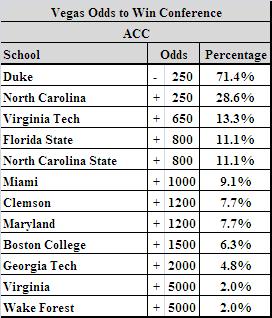
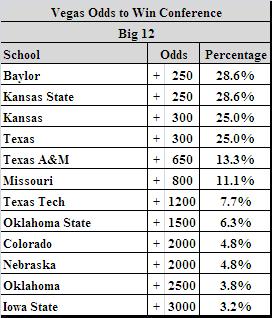

 The Field: Ever since the
The Field: Ever since the 

